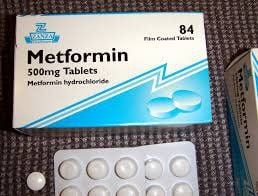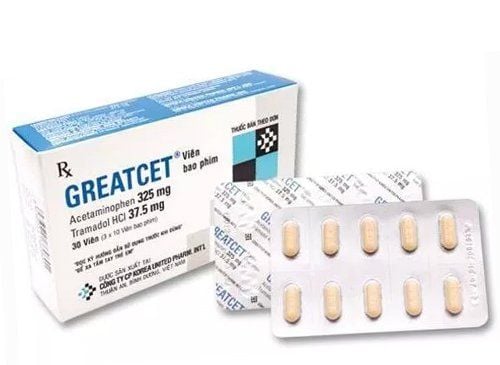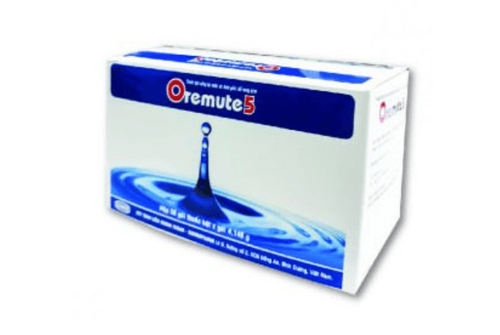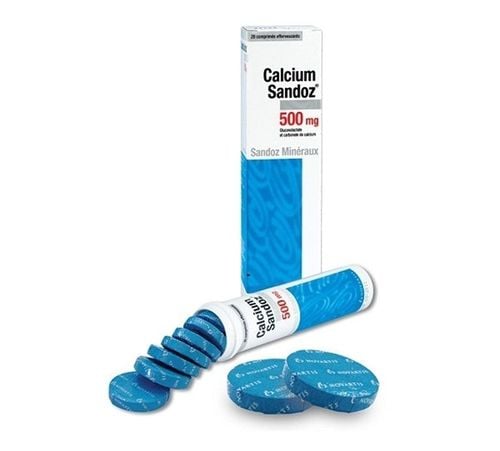This is an automatically translated article.
Glucose medicine 30 is often used to treat cases of hypoglycemia, carbohydrate deficiency or dehydration due to diarrhea,... During the use of Glucose 30%, patients need to be closely monitored and Follow your doctor's instructions exactly.
1. What is Glucose 30?
Glucose medicine 30 belongs to the group of solutions to regulate water, electrolytes and acid-base balance, manufactured by Mekophar Pharmaceutical Joint Stock Company - Vietnam. Glucose 30 is used for cases of fluid and glucose deficiency due to malnutrition, alcohol poisoning,...
Currently, Glucose 30 is prepared in the form of a solution for intravenous infusion, packaged according to specifications. 250ml or 500ml bottles. In each ampoule of Glucose 30% injection, the main active ingredient is Glucose (content 1.5g) and other excipients just 5ml.
So what is the main ingredient in the drug Glucose 30? According to research, Glucose acts as a simple sugar containing 6C, often used mainly to overcome conditions of glucose and fluid deficiency, and to help provide necessary energy for patients.
The main active ingredient Glucose in the drug Glucose 30% has a fast metabolism in the body in the form of water and Carbon dioxide. In addition, Glucose also releases energy for the body. Because of this use, Glucose is often used in combination with electrolyte solutions to help prevent and treat dehydration caused by diarrhea. Not only that, Glucose also works to improve hypoglycemia very effectively.
2. Indications and contraindications for using Glucose 30
2.1. Indications for use of the drug Glucose 30 Glucose medicine 30% is often prescribed by doctors for the following cases:
Treatment of carbohydrate deficiency. Treatment of hypoglycemia caused by alcohol poisoning, malnutrition, trauma or metabolic stress. Treat dehydration caused by diarrhea. 2.2. Contraindications to the use of the drug Glucose 30 Do not use the drug Glucose 30 for the following cases without a doctor's prescription:
Patients with hypersensitivity or allergy to Glucose and any components present in the infusion solution . Glucose 30 is contraindicated in patients with glucose intolerance. Intravenous glucose should not be given to patients without electrolyte replacement when hypotonic dehydration is present. Glucose 30 is contraindicated in patients with hypokalemia, fluid retention, hyperosmotic coma, acidosis, intracranial/spinal bleeding, and anuria. Do not treat with Glucose 30 infusion for people who have just experienced a cerebrovascular accident.
3. Dosage and how to use Glucose 30
3.1. Dosage of Glucose 30 Drugs Glucose 30 is usually injected slowly intravenously from 5 to 20ml / time or used as directed by a doctor. The maximum infusion dose of Glucose 30% that the doctor recommends is between 500 - 800mg/kg/hour.
3.2. How to use Glucose 30 Drugs Glucose 30 is injected into the central vein or peripheral vein of the patient. The recommended glucose infusion rate is 3 to 5 ml/min. During the use of the drug, the patient's blood glucose indicators should be closely monitored.
When administering a central intravenous infusion, use hypertonic solutions. Glucose 30 is administered by central intravenous route to patients with signs of hypermetabolism or malnutrition. This is because Glucose is diluted faster.
In the event of a hypoglycemic emergency, the patient may require a slow infusion of Glucose 30 into a peripheral vein. However, this route of administration should be used only for the short term or only as adjunctive therapy to the gastrointestinal tract or for patients at high risk of complications when administered via a central venous infusion. heart.
When administering an overdose of Glucose 30, patients may experience symptoms such as electrolyte imbalance, edema or hyperglycemia. To manage this condition, the doctor may inject insulin or reduce the dose of the drug for the patient. In the case of high blood sugar or urinary tract infection, the doctor will perform a balance between water and electrolytes, and adjust the infusion rate and volume of fluid.
4. Possible side effects when infusion of Glucose 30
During the infusion of Glucose 30, patients may experience some undesirable side effects as follows:
Common reactions: There is pain at the intravenous injection site, especially when the solution is injected. Hypertonic glucose solution has a low pH; thrombophlebitis, vein irritation or even injection site necrosis if the drug solution escapes the vessel. Uncommon reactions: Hypokalemia, hypophosphataemia or hypomagnesaemia. Rare reactions: Water intoxication, edema, dehydration due to high blood glucose. When any of the symptoms mentioned above appear during or after the intravenous administration of Glucose 30, the patient should immediately notify the physician undertaking the treatment for corrective action.
5. Things to note in the process of using Glucose 30
5.1. What precautions should patients take while taking Glucose 30? Here are the things that patients need to be careful about when administering Glucose 30 intravenously, including:
Before injecting Glucose 30, check the drug's expiry date. Do not use when the medicine has expired. Check the syringe for fluid leaks, and check the clarity of the solution. If visible particles are visible to the naked eye, further use of the drug should be avoided. Always closely monitor the patient's blood sugar, electrolytes and water to replenish when needed. Do not use the same set of lines for infusion of Glucose 30 solution and blood, as this can easily cause obstruction and hemolysis. Infusion of intravenous glucose solutions can cause fluid and electrolyte disturbances, including hypophosphataemia, hypomagnesaemia, or hypokalemia. Avoid excessively rapid or prolonged infusion of large amounts of hypertonic glucose solution as this can easily lead to hyperglycaemia leading to cellular dehydration. Absolutely do not infuse hypertonic Glucose solution to people who are dehydrated because this will make dehydration worse due to the effect of osmotic diuretics. Patients with diabetes should avoid rapid glucose infusion because it can easily lead to hyperglycemia. Patients with malnutrition, traumatic shock, glucose intolerance, thiamine deficiency or septic shock need to be very careful when using Glucose 30. Use of Glucose 30 solution intravenously for pregnant women has may increase the risk of high blood sugar in the fetus, and even lead to metabolic acidosis and hypoglycemia in the newborn. Therefore, women who are pregnant should only receive Glucose 30 infusion when indicated and closely monitored by a doctor. Glucose 30 can be used by nursing women and is safe for people to drive or operate machinery. Glucose 30 should be stored at a temperature of about 25 degrees Celsius, stored in a cool and dry place, avoiding freezing the solution. 5.2. Interactions of Glucose 30 with other drugs Glucose 30 medicine can interact when used with the following drugs:
Causing precipitation of Indomethacin when used in combination with solutions containing Glucose with a pH below 6. Reduces effects use of insulin. In order to avoid the risk of an interaction between Glucose 30 with other drugs, the doctor will base on the test indicators, the information the patient is taking, the patient's history and current health status to make recommendations. appropriate designation.
Please dial HOTLINE for more information or register for an appointment HERE. Download MyVinmec app to make appointments faster and to manage your bookings easily.













